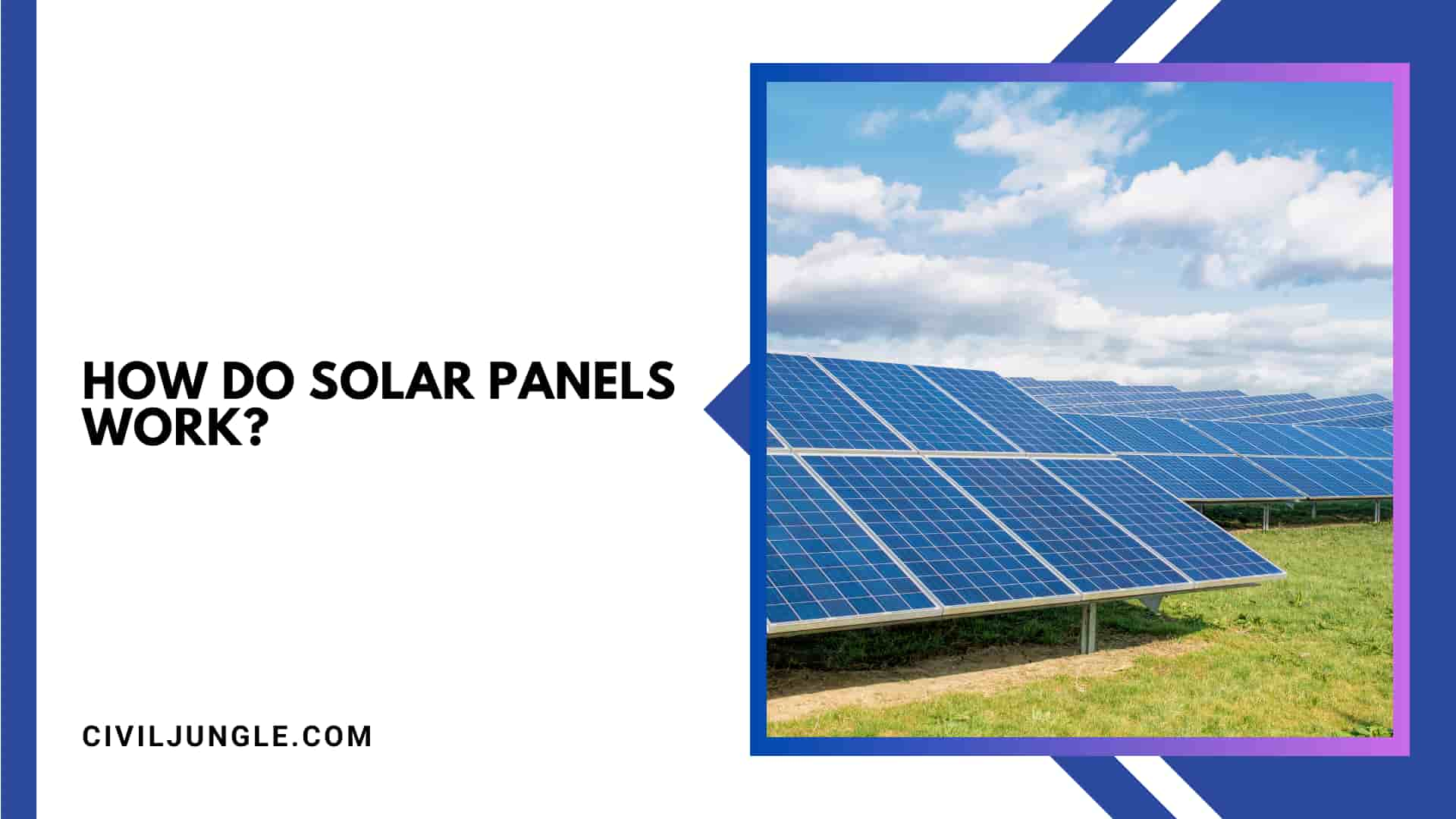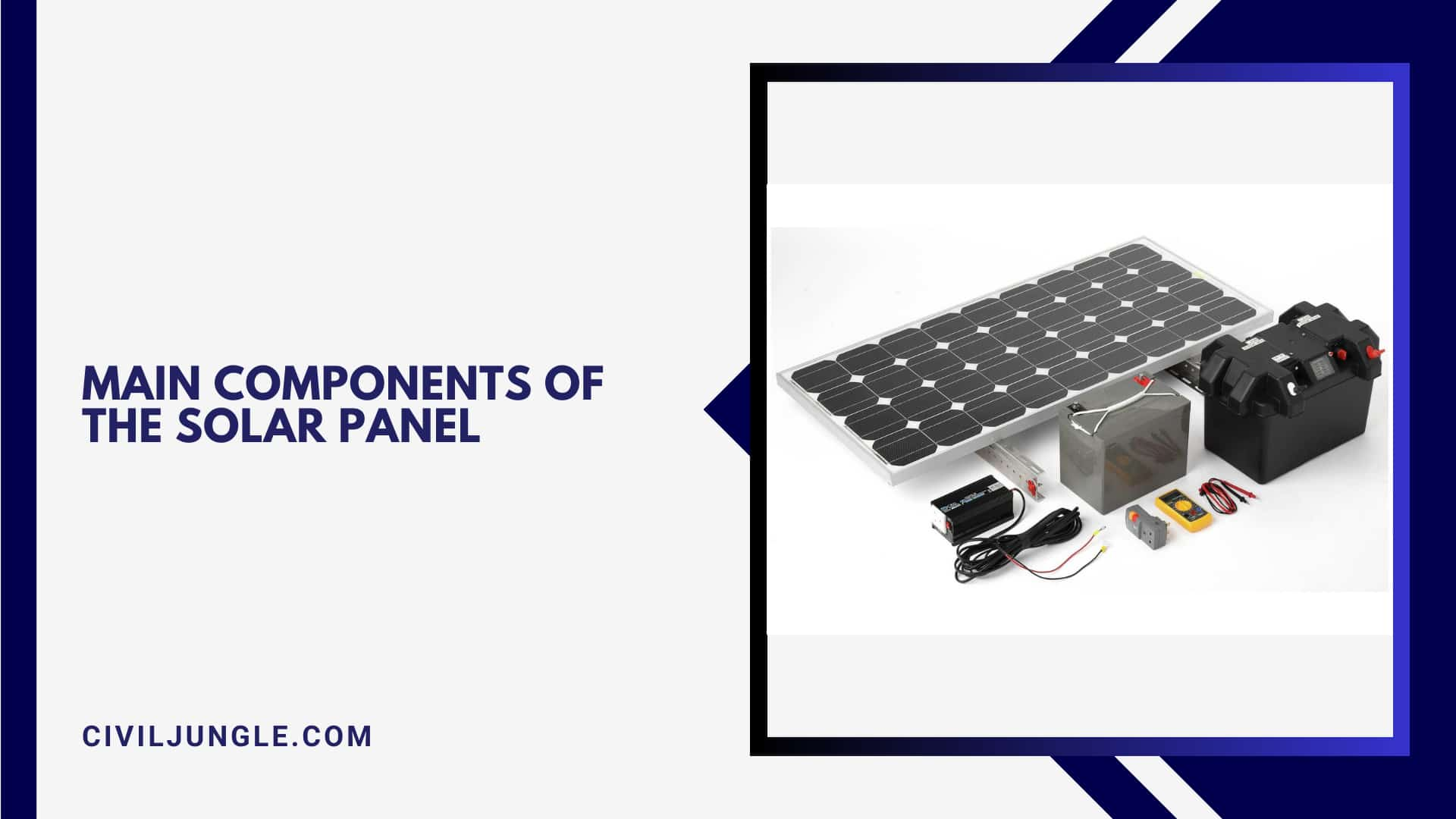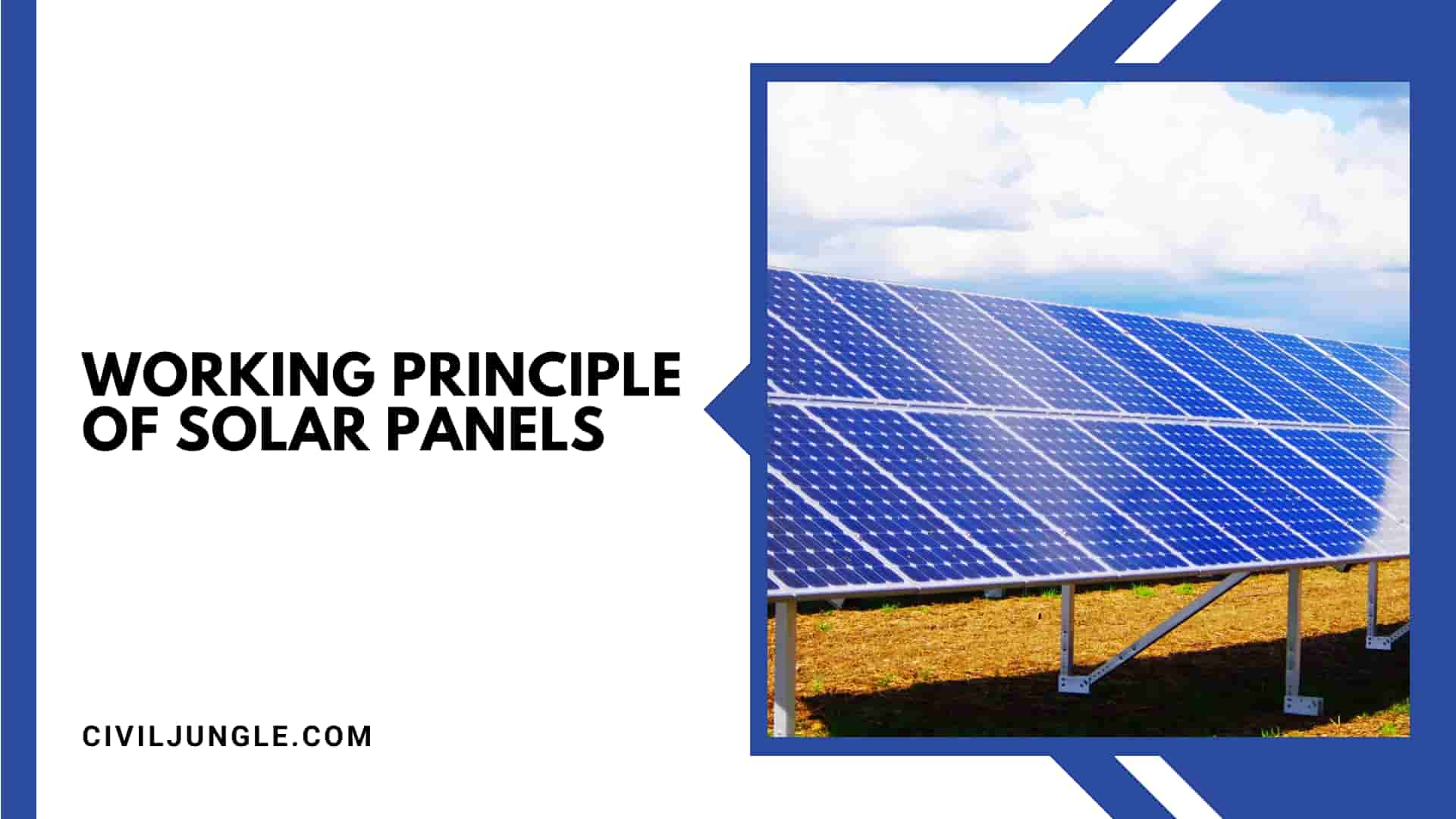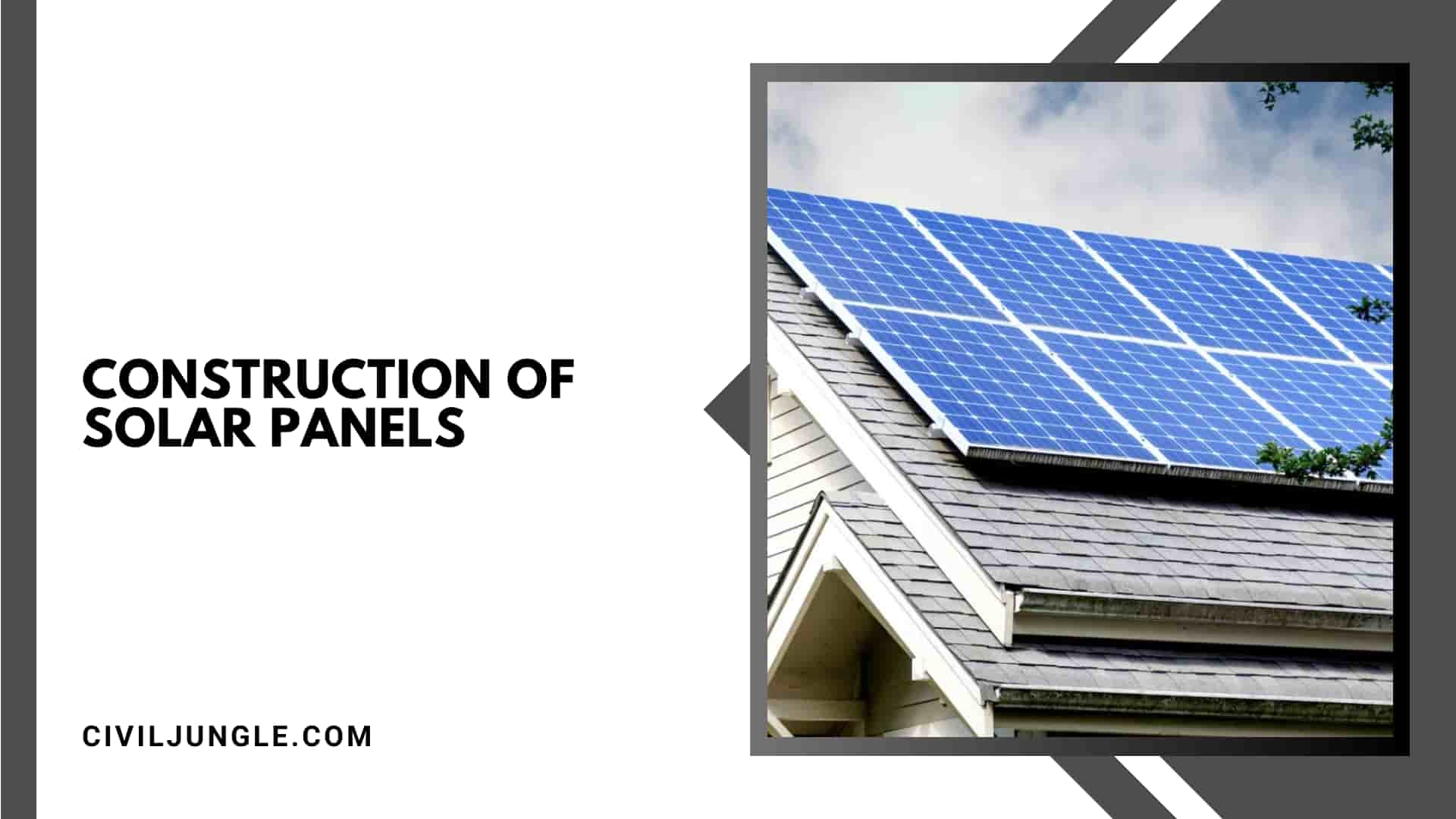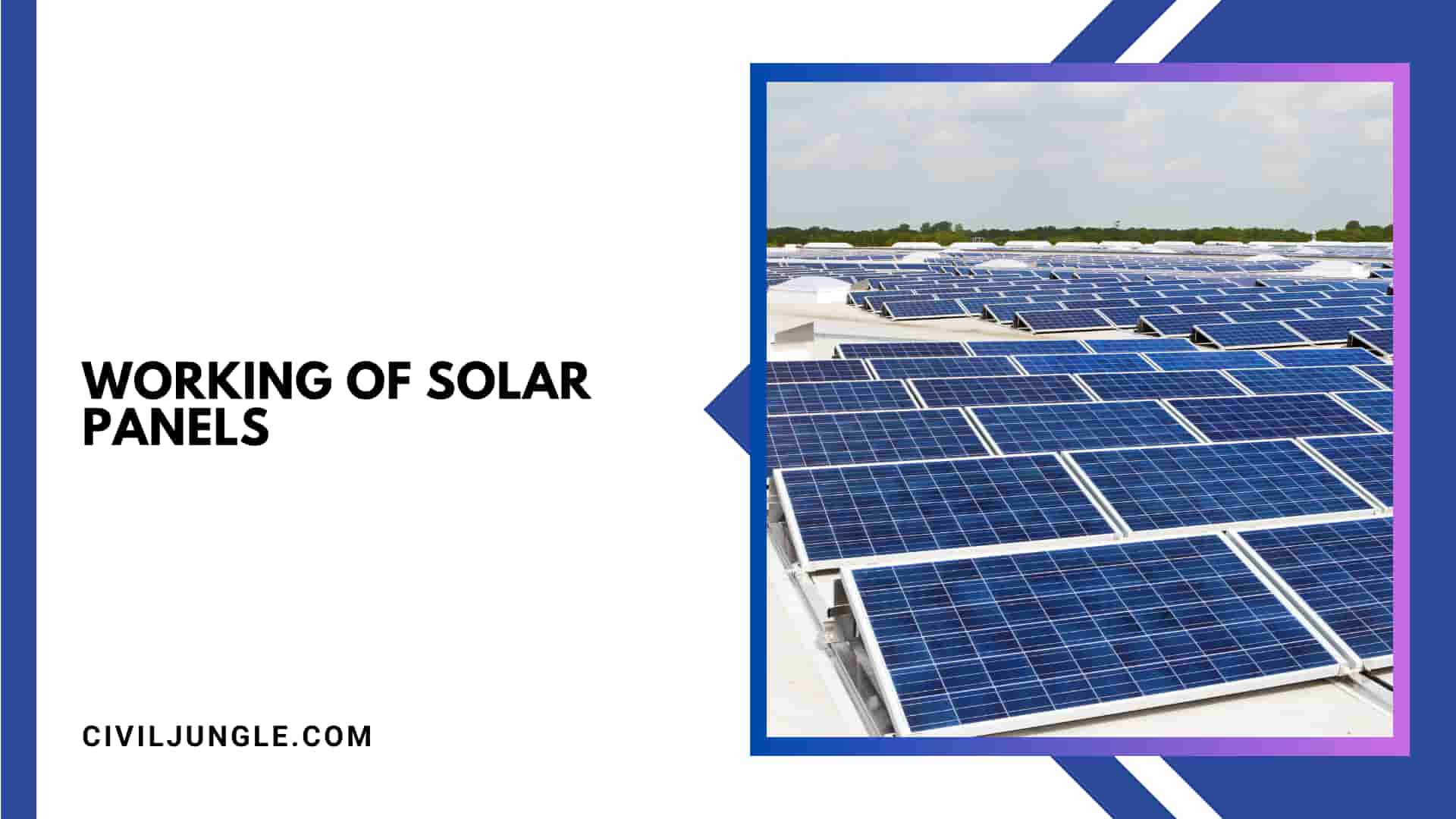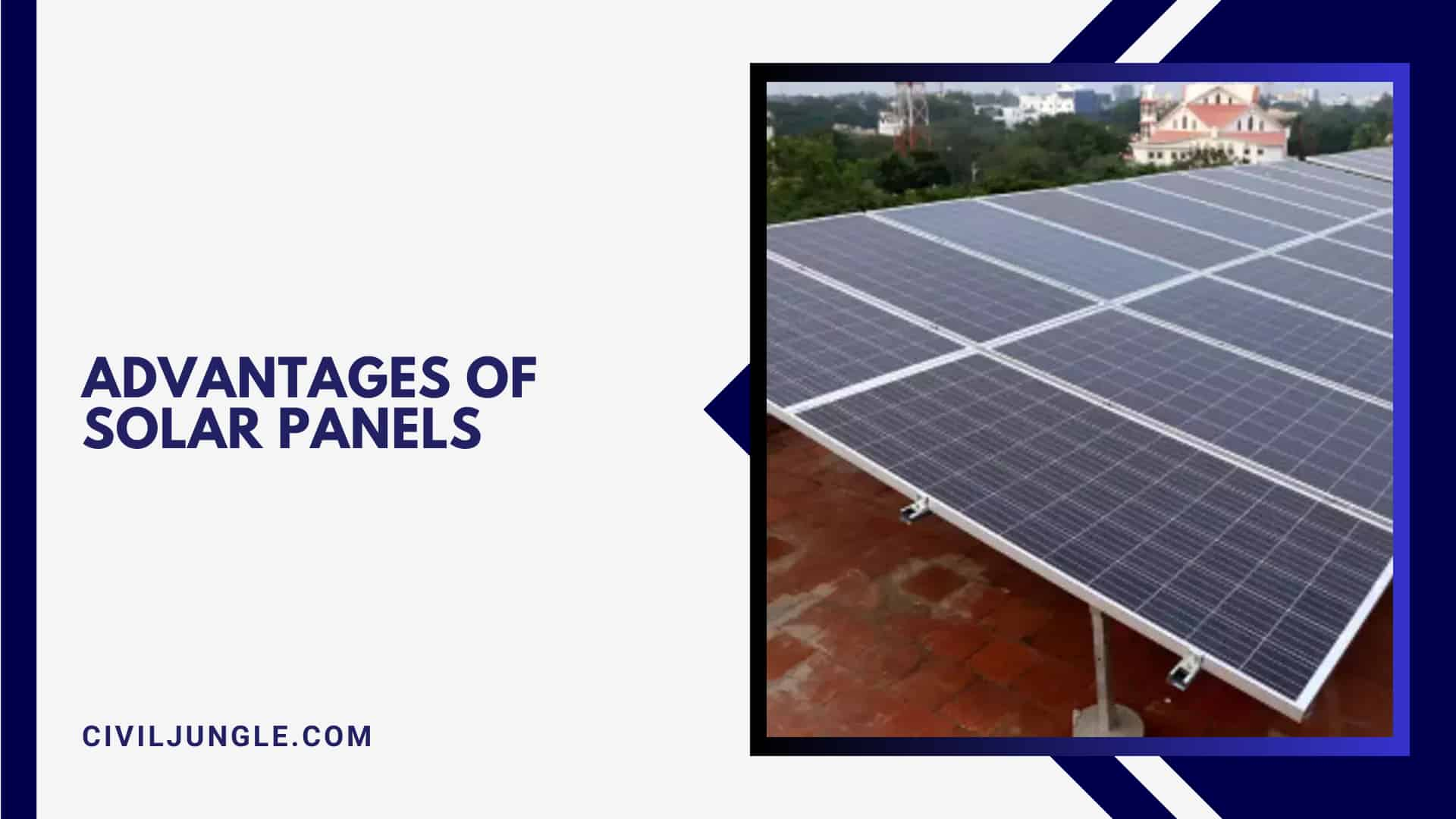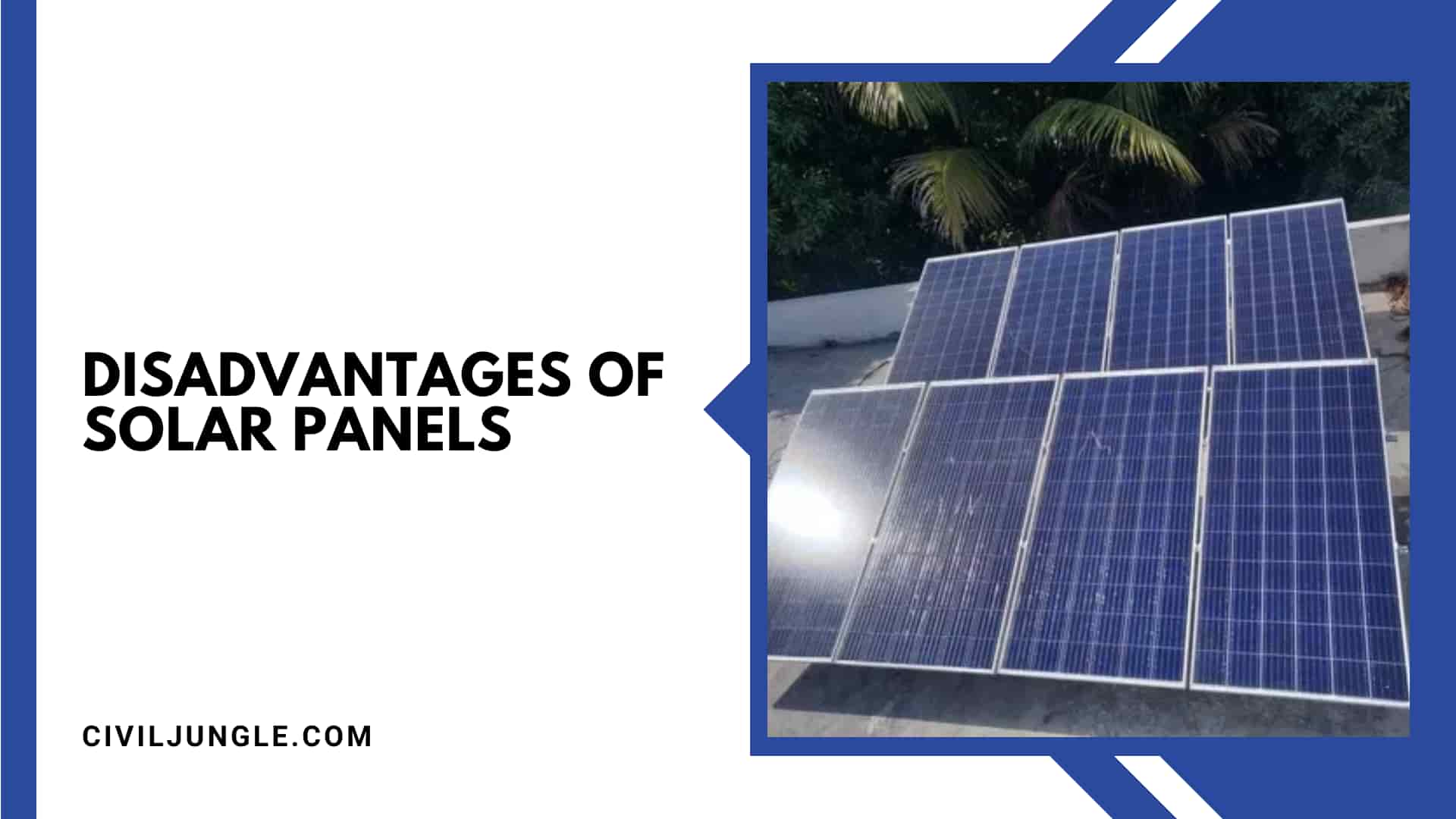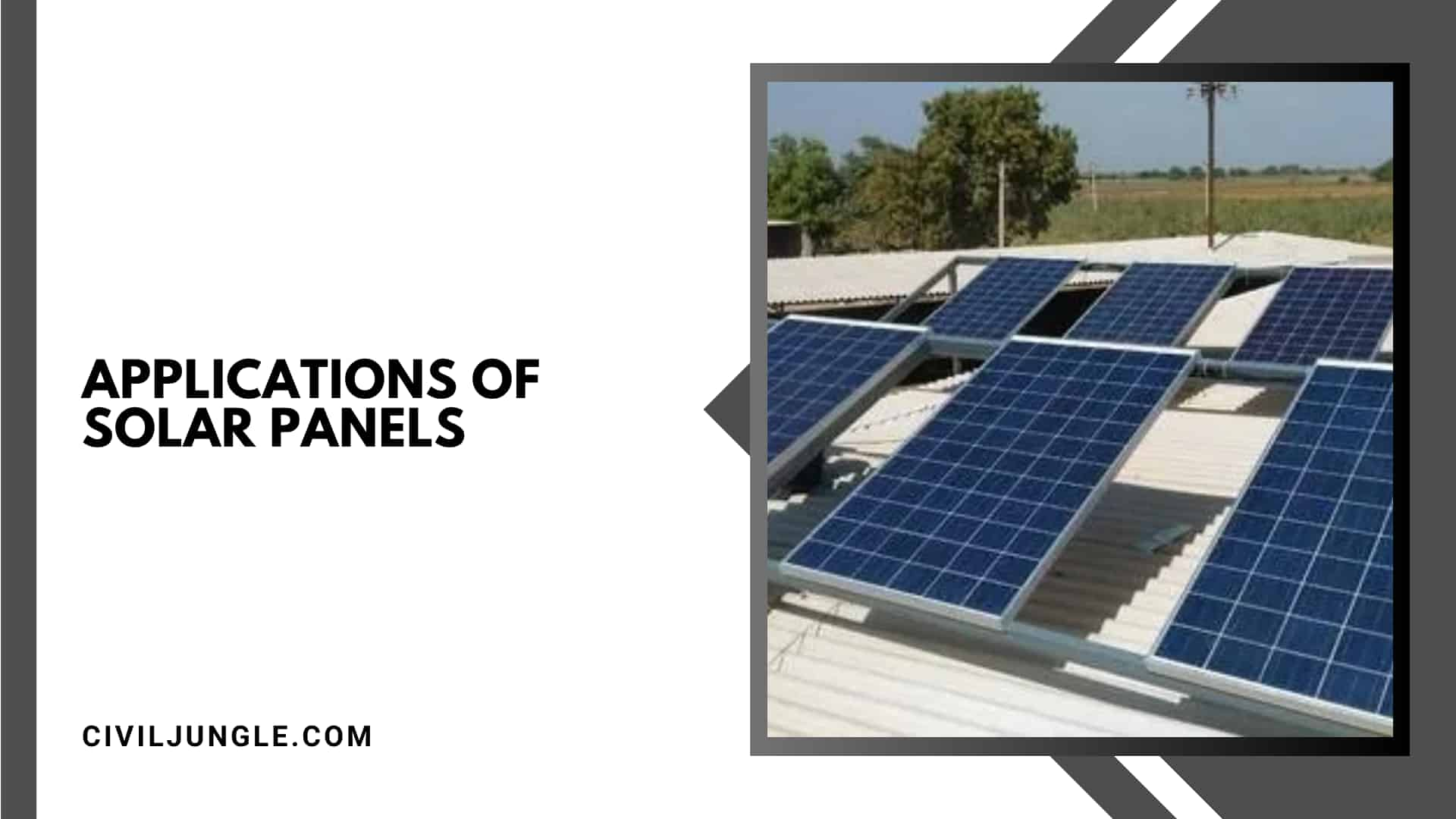Important Point
What Is a Solar Panel?
The development of solar energy goes back over 100 years. In the early days, solar energy was mainly used for the production of steam which could then be used to drive machinery.
But it was not until the “photovoltaic effect” was discovered by Edmund Beckerell that it would allow sunlight to turn into solar energy.
The discovery of Becquerel led to the invention by Charles Fritts of the first real solar cells in 1893, which were made by coating sheets of selenium with a thin layer of gold.
And from this humble beginning, we will be able to know the device that we know today as a solar panel. In 1941, Russell Ohl, an American inventor, patented the world’s first silicon solar cell on the payroll of Bell Laboratories.
Ohl’s invention produced the first solar panel in 1954 by the same company. The solar panel found its first mainstream use in space satellites. Solar energy begins with the SunSun.
The solar panel working principle involves using the solar panel (also known as “P.V. panels”) to convert light from the SunSun, which is made up of particles of energy called “photons,” into electricity that is used by electric loads.
It can be done to do. The solar panel can be used for a wide variety of applications, including cabins, telecommunications equipment, remote sensing, and of course, remote power systems for the production of electricity by residential and commercial solar electric systems.
Based on the solar energy working principle, solar panels (also known as photovoltaic cell or P.V. panel) are defined as electrical devices that converts light energy into electricals energy through a photovoltaic effect.
A solar cell is basically a P-N junctions diode. Based on the photovoltaic cell working principle, solar cells are a form of photoelectric cell – such as currents, voltage, or resistance – differ when exposed to light.
Individual solars cells can be combined to form modules known as solar panels. Common single-junction silicon solar panels can produce maximum open-circuit voltages of about 0.5 to 0.6 volts.
By itself, this is not too much – but remember that these solar cells are small. When added to a large solar panel, a considerable amount of renewable energy can be generated.
Also, Read: Top 10 Mechanical Companies in UK 2021
How Do Solar Panels Work?
How does a solar panel work? Solar panels collect clean, renewable energy in the form of sunlight & convert that light into electricity that can then be used to provide electricity for electric loads.
Following the solar panel principle, solar panels are made up of several individual solar cells, phosphorus (which provides a negative charge), and boron (which provides a positive charge). Solar panels absorb photons and, in doing so, initiate an electric current.
The energy generated from the photons breaking the surface of the solar panel allows electrons to be knocked out of their atomic orbitals and released into the electric field generated by the solar cells, which then pulls these free electrons into directional currents.
This entires process is known as the photovoltaic effect.
Based on the working principle of solar energy, the required number of solar panels in an average home requires additional electricity to supply all of its electricity to produce more solar energy than a sufficient rooftop area, thereby shutting down electricity usage on the main power grid.
In a well-balanced grid-connected configuration, a solars array generates electricity during the day, which is then used at home at night.
Net metering programs allow solars generator owners to pay if their system generates excess electricity in the home.
In off-grid solar applications, a battery bank, charge controller, & in most cases, an inverter are essential components.
Solar arrays send direct current (D.C.) electricity to the battery bank via a charge controller.
Power is then drawn from the batteries bank to the inverters, which converts the D.C. currents into an alternating current (A.C.), which can be used for non-DC equipment.
Aided by an inverter, solar panel arrays can be sized to meet the most demanding electrical load requirements.
A.C. current can be used for homes or commercial buildings, recreational vehicles and boats, remote cabins, cottages, or homes, remote traffic control, telecommunications equipment, oil and gas flow monitoring, RTUs, SCADA, and more is.
Also, Read: Top 10 Mechanical Companies in UAE 2021
Main Components of the Solar Panel:
#1. Solar Panel
It is the heart of solar power plants. A solar panel consists of several solar cells. We have found about 35 solar cells in one panel.
The energy produced by each solars cell is very small, but combining the energy of 35 of them gave us enough energy to charge a 12-volt battery.
#2. Solar Cell Components
It is an energy-generating unit made of P-type and N-type silicon semiconductors. It is the heart of solar power plants.
#3. Battery
Batteries are used to return the energy produced during the day or to store excess energy supplied during the night.
#4. D.C. to A.C. Converter (Inverter)
Solar panels produce a direct current that needs to be converted into alternating current to supply to homes or the power grid.
Also, Read: Top 10 Mechanical Companies in USA 2021
Working Principle of Solar Panels:
Based on the solar working principle, when light reaches the p-n junction, light photons can easily enter the junction through a very thin p-type layer.
Light energies, in the form of photons, supply enough energy to the junction to form many electron-hole pairs.
The incident light breaks the thermal equilibrium state of the junction. Free electrons in the depletion regions can quickly move to the n-type of the junction.
Likewise, holes in the reduction may quickly fall towards the P-type of the junction. Once the newly created free electrons move towards the n-type, the junction cannot move the junction further due to its barrier potential.
Similarly, newly created holes coming to the P-type side cannot cross the forward junction, which has become the same barrier potential of the junction.
As the density of electrons increases on one side, i.e., the n-type of the junction, and the density of the pores increase on the other side, that is, on the p-type of the junction, the P.N. junction will behave like a small battery panel.
Also, Read: Top 10 Mechanical Companies in India 2021
Construction of Solar Panels:
The construction of the solar cell is shown below. The apical layer of this cell consists of an anti-reflective cover glass.
This glass protects semiconductor materials against sunlight. In this cell, small grid patterns with slight metal stripes are available under the glass. So that the top layer of these cells can be made using glass, metal strips, and anti-reflective coatings.
The most important part of the cells in the middle layer, where solars energy can be formed by the effect of photovoltaic.
It consists of two semiconductor layers composed of p-type & n-type materials. The base layers of these cells consist of two parts.
A rear metallic electrode is below the P-type semiconductor and works with metallic grids to generate an electric current in the pinnacle layers.
Solar cells are basically a junction diode, although their constructions are slightly different from a conventional P-N junction diode.
A very thin layer of p-type semiconductors is grown on a relatively thick n-type semiconductor.
We then apply some finer electrodes on top of the p-type semiconductor layer. These electrodes do not obstruct the light from reaching the thin P-type layer. There is a P-N junction just below the P-type layer.
We also provide a current collecting electrode under the N-type layer. We surround the entire assembly with thin glass to protect the solar panel from any mechanical shocks.
Also, Read: What Is Cooling Towers? | Working of Cooling Towers | Types of Cooling Towers
Working of Solar Panels:
The solar panel working mechanism involves the absorption of solar energy when it falls on the solar panel. Each panel of a solar panel includes a semiconductor material to combine the properties of the insulator and metals.
So it makes light energy to be converted into electricity. Once the energy from the sun falls on the panel, a semiconductor is absorbed, the energies of the photons are transferred to electrons and allow the flow of electrons through the material, like an electric current.
As sunlight falls on the solar cell, a large number of photons hit the P-silicon region. After absorbing the energy of the photon, the electron and hole pair will separate.
The electron moves from the p-type field to the n-type field due to the action of the electric field at the p-n junction.
In addition, the diode is reversed to increase this electric field. So this current starts flowing in the circuits for individual solar cells.
We combine the current of all solar cells in a solar panel to achieve a significant output. In solar power plants, a large number of solar panels are interconnected to achieve large voltage outputs.
Based on the solar power plant working principle, the electrical energy coming from the combined effort of the solar panels is supplied to the lithium-ion battery at night when there is no sunlight.
Also, Read: What Is Cooling Towers? | Working of Cooling Towers | Types of Cooling Towers
Advantages of Solar Panels:
The advantages of solar cells include the following.
- It is a renewable energy source.
- The electricity bill can be reduced by its use.
- Maintenance costs are low.
- Simple to operate.
- It does not generate noise and emissions.
- It does not use water or fuel to generate electricity.
- The lifespan of these cells is about 30 years.
- It needs less maintenance.
- No pollution is associated with it.
- It should last for a long time.
Also, Read: How Does a Radiator Work? | Parts of Radiator | Coolant In The Radiator | Radiator Failure
Disadvantages of Solar Panels:
Here, the different disadvantages of solar panels are as follows
- It has a high cost of installation.
- Its efficiency is low.
- During cloudy days, energy cannot be produced, and even at night, we will not get solar energy.
- It requires a lot of lands to occupy it forever.
- The initial cost of installation is very high.
- Energy storage options are more efficient, if not more efficient.
- Power generation is much lower than nuclear or other resources for power generation.
- It is troublesome for a few days when it is cloudy.
- Their production causes pollution.
Applications of Solar Panels:
Here, the different applications of solar panels are as follows
- The solar power plant is powering cities in the most efficient way.
- Solar panels can be used to individually generate electricity for each home, especially in remote areas.
Frequently Asked Questions (FAQ)
Solar Panel Parts and Components
There are 5 key components in a home solar panel system: solar panels, an inverter, an electrical panel, the power grid, and the sun. In this blog, we’ll walk you through how each component works together to create a complete solar panel system.
Parts of a Solar Panel: Solar Panel Raw Material
The basic raw material of a solar panel is pure silicon. However, the outer frame enclosing an array of solar cells in each solar panel is made of glass. The glass must be highly transparent to allow the sunlight to penetrate the frame.
Solar Panel Parts
Components for Your Solar Panel (Photovoltaic) System · Photovoltaic Modules (aka Solar Panels, Solar Electric Panels, or PV Modules) · Balance of System (BOS).
Solar Panel Assembly Parts
- Six Main components of a solar panel
- Solar photovoltaic cells.
- Toughened Glass – 3 to 3.5mm thick.
- Extruded Aluminium frame.
- Encapsulation – EVA film layers.
- Polymer rear back-sheet.
- Junction box – diodes and connectors.
Components of Solar System
The Latest. Our solar system consists of our star, the Sun, and everything bound to it by gravity – the planets Mercury, Venus, Earth, Mars, Jupiter, Saturn, Uranus, and Neptune; dwarf planets such as Pluto; dozens of moons; and millions of asteroids, comets, and meteoroids.
Solar Energy Components
Components for Your Solar Panel (Photovoltaic) System
- Photovoltaic Modules (aka Solar Panels, Solar Electric Panels, or PV Modules).
- Balance of System (BOS).
- Solar Panel or PV Module Mounting Systems.
- Combiner Box.
- Solar Charge Controllers.
- Batteries for Solar Electric Systems.
- Solar Inverters.
- DC and AC Disconnects.
Working of Solar Panel
Sunlight hits the solar panels and creates an electric field. The electricity generated flows to the edge of the panel, and into a conductive wire. The conductive wire brings the electricity to the inverter, where it is transformed from DC electricity to AC, which is used to power buildings.
How Do Solar Panels Work?
When the sun shines onto a solar panel, energy from the sunlight is absorbed by the PV cells in the panel. This energy creates electrical charges that move in response to an internal electric field in the cell, causing electricity to flow.
Solar Cell Principle
Based on the solar cell working principle, a solar cell is a device that directly converts the energy of light into electrical energy through the photovoltaic effect. Solar cells or photovoltaic cells are made based on the principle of the photovoltaic effect. They convert sunlight into direct current (DC) electricity.
What Are the Components of Solar Panels?
A standard solar panel consists of a layer of silicon cells, a metal frame, a glass casing, and various wiring to allow current to flow from the silicon cells. Silicon is a nonmetal with conductive properties that allow it to absorb and convert sunlight into electricity.
Like this post? Share it with your friends!
Suggested Read –
- Velox Boiler | Construction of Velox Boiler | Principle of Volex Boiler | Working of Volex Boiler
- Steam Stop Valve in Boiler | Parts of Steam Stop Valve | Constructions of Steam Stop Valve | Working of Steam Stop Valve
- Working of Locomotive Boiler | Parts of Locomotive Boiler | Advantages of Locomotive Boiler | Disadvantages of Locomotive Boiler
- What Is Boiler? | Types of Boiler | Steam Boiler | How Boiler Work | Boiler Operation | Boilers Diagram | How Does a Steam Boiler Work
- Cochran Boiler | Cochran Boiler Working | Working Principle of Cochran Boiler | Applications of Cochran Boiler | Advantages & Disadvantages of Cochran Boiler


